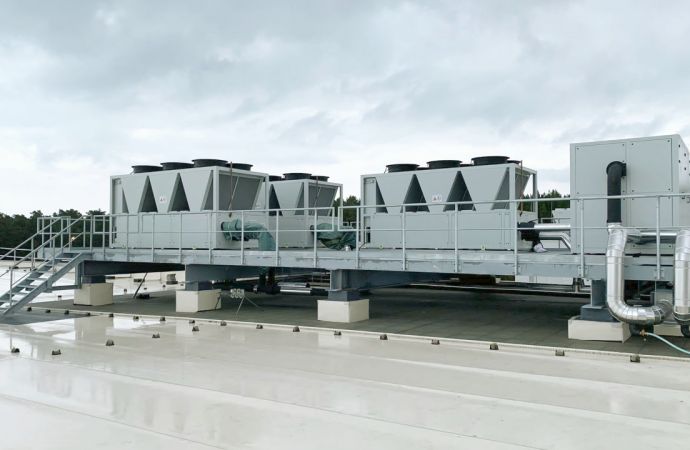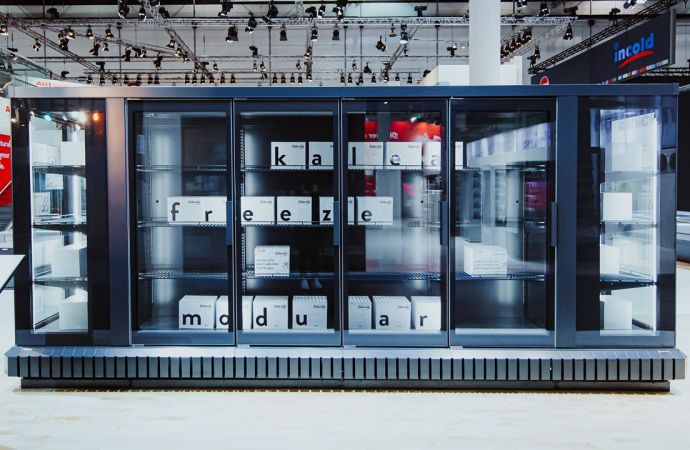The merger appears to let Whole Foods continue its current operations and programs.

Aaron Daly, Whole Foods (left) receving Accelerate America award from Marc Chasserot, shecco, at ATMOsphere America
In a move with far-reaching implications for the U.S. grocery business, online retail pioneer Amazon and organic grocery chain Whole Foods Market announced Friday that they have entered into a definitive merger agreement under which Seattle-based Amazon will acquire Whole Foods for about $13.7 billion. The parties expect to close the transaction during the second half of 2017.
The merger signals Amazon’s intention to expand its Amazon Fresh grocery operation from a mostly online business to something that could include in-store pick-up at Whole Foods’ more than 460 locations in the U.S., Canada and the U.K. In Seattle, Amazon recently opened two of its own drive-through grocery pickup locations for Amazon Fresh customers.
But the merger also raises question about its impact on Whole Foods’ ongoing operation, including environmental initiatives like tests of natural refrigerant in a growing number of stores.
Last week, at the ATMOsphere America 2017 conference in San Diego, Calif., Accelerate America magazine presented Whole Foods with a best-in-sector award in the food retail category for its myriad natural refrigerant pilots, including 10 stores with transcritical CO2 systems, one with ammonia/CO2 cascade and one with propane/CO2 cascade, as well as more than 50 stores with at least one propane self-contained case (shecco produces ATMOsphere America and Accelerate America as well as this website).
Tristam Coffin, director of sustainability and facilities at Whole Foods Market, said at ATMOsphere America that the company has 15-30 stores per year “in development” with natural refrigerant-based systems, adding: “We see the greatest opportunities in retrofits.”
This partnership presents an opportunity to maximize value for Whole Foods Market’s shareholders, while at the same time extending our mission and bringing the highest quality, experience, convenience and innovation to our customers."
– John Mackey, Whole Foods Market
The merger announcement suggested that Whole Foods would maintain its current operations as before, saying the chain “will continue to operate stores under the Whole Foods Market brand and source from trusted vendors and partners around the world.” John Mackey will remain as CEO of Whole Foods Market, and the company’s headquarters will remain in Austin, Texas.
“This partnership presents an opportunity to maximize value for Whole Foods Market’s shareholders, while at the same time extending our mission and bringing the highest quality, experience, convenience and innovation to our customers,” Mackey said in the announcement.
Whole Foods declined to comment on the record about the impact of the merger on company’s environmental initiatives. However, “if they truly keep Whole Foods Market as a separate division and Mackey in place as they say they will, they'd presumably maintain whatever [environmental] stances they already had,” said Jon Springer, retail editor for Supermarket News.
On its own, Amazon has been pursuing a number of environmental initiatives in recent years. For example, Amazon will host solar energy systems on 15 fulfillment facility rooftops across the US, with the capacity to generate 41 MW of power. Amazon additionally has set a goal to host solar energy systems at 50 fulfillment network buildings by 2020.
In September 2016, the company announced Amazon Wind Farm Texas, its largest wind farm to date – a new 253 MW wind farm that will generate 1 million MWh of wind energy annually.
In April 2016, Amazon joined Apple, Google, and Microsoft in filing a legal brief that supports the continued implementation of the U.S. Environmental Protection Agency’s Clean Power Plan. Amazon has also joined those companies in declaring they would adhere to the Paris Climate Accord despite the Trump administration’s recent move to withdraw from the agreement.
In the HVAC arena, Amazon's newest buildings in the Denny Triangle area of Seattle are heated with recycled energy from a nearby non-Amazon data center. This "district energy" system works by capturing heat generated at the Westin Building data center and recycling the heat through underground water pipes instead of venting it into the atmosphere. This approach is nearly four times more efficient than traditional heating methods, according to Amazon, and will also enable the data center to cut back on the energy it uses to cool its building.
Related stories



